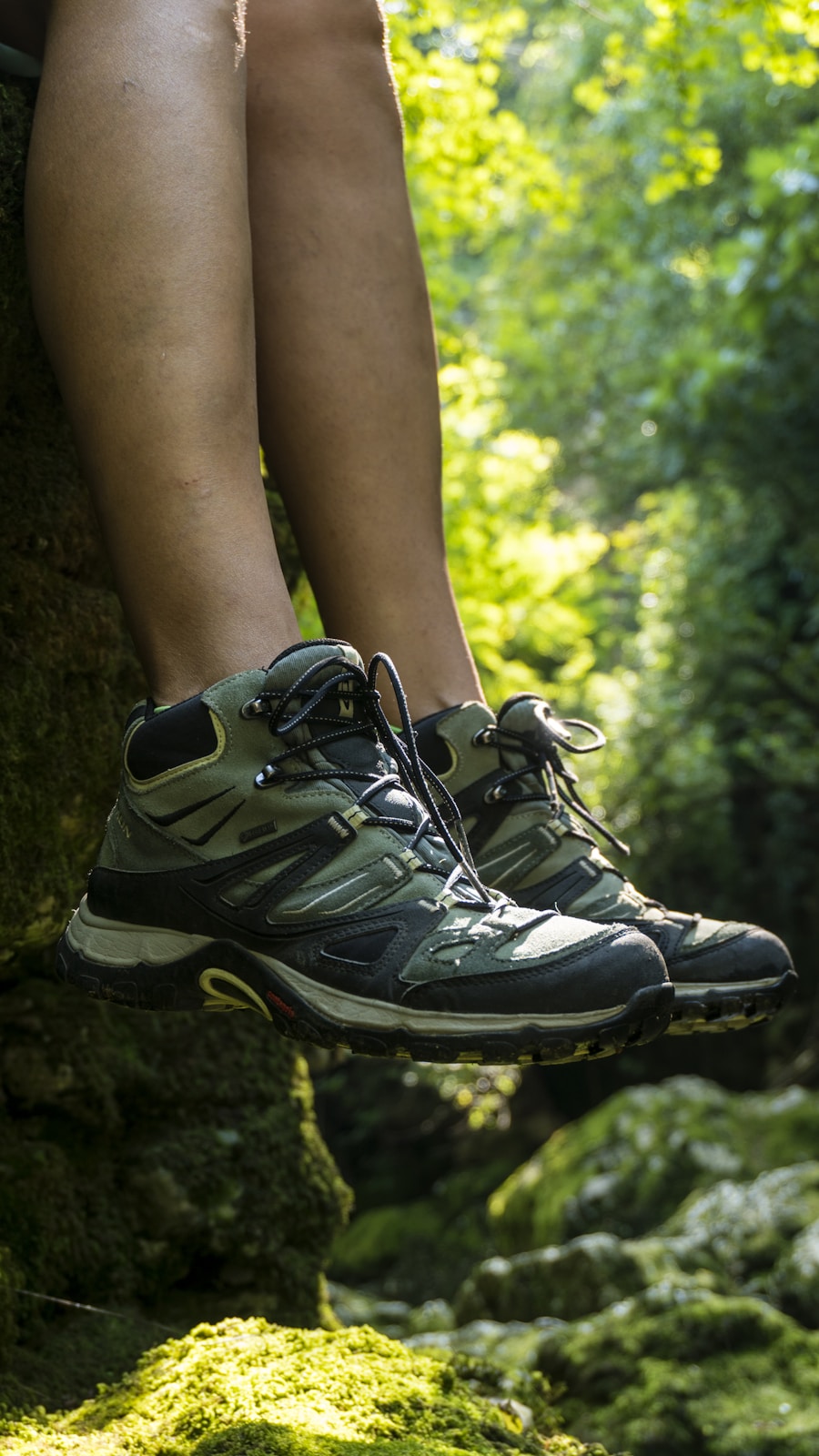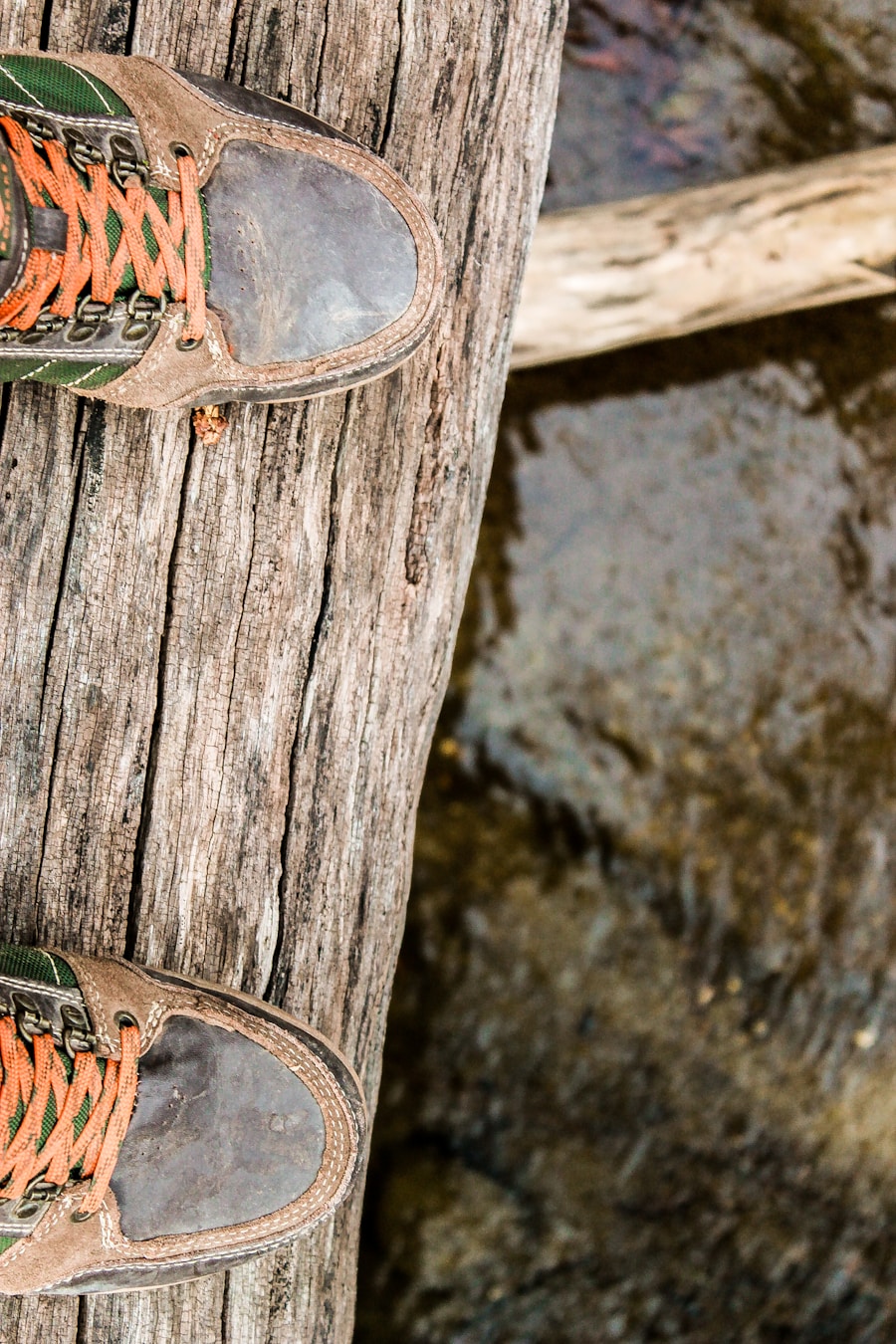When embarking on a hiking adventure, the terrain you will traverse plays a crucial role in determining the type of footwear you should choose. Different environments present unique challenges, and understanding these can significantly enhance your hiking experience. For instance, rocky trails require shoes with robust outsoles that provide excellent traction and stability.
In contrast, muddy or wet conditions necessitate footwear that can handle slippery surfaces without compromising safety. The elevation changes in mountainous regions also demand shoes that offer adequate ankle support to prevent injuries during steep ascents and descents. Moreover, the climate and weather conditions of your hiking destination are equally important.
If you are hiking in a region known for its wet climate, such as the Pacific Northwest, you will need shoes that can withstand prolonged exposure to moisture. Conversely, if your hike takes you through arid deserts, breathability becomes a priority to keep your feet cool and comfortable. Understanding the specific characteristics of your hiking terrain will guide you in selecting the most appropriate footwear, ensuring that you are well-prepared for the challenges ahead.
Key Takeaways
- Understanding the terrain is crucial for choosing the right hiking shoes
- Consider materials like leather for durability and breathability
- Finding the right fit is essential for preventing blisters and discomfort
- Look for support features like ankle support and stability features like a shank
- Waterproofing is important for wet conditions, while breathability helps keep feet dry
- Durability and longevity are important for getting the most out of your investment
- Consider the weight of the shoes for comfort during long hikes
- Balance your budget with the value and features offered by the hiking shoes
Considerations for Hiking Shoe Materials
The materials used in hiking shoes significantly influence their performance, comfort, and durability. Typically, hiking shoes are constructed from a combination of synthetic materials, leather, and rubber. Synthetic materials, such as nylon and polyester, are lightweight and often treated for water resistance, making them ideal for day hikes or less demanding trails.
Leather, on the other hand, is renowned for its durability and ability to withstand harsh conditions, but it can be heavier and less breathable than synthetic options. Rubber is another critical component, particularly in the outsole of hiking shoes. High-quality rubber provides excellent traction on various surfaces, from rocky paths to muddy trails.
Some manufacturers incorporate specialized rubber compounds that enhance grip and durability. Additionally, the midsole material plays a vital role in cushioning and shock absorption. EVA (ethylene-vinyl acetate) foam is commonly used for its lightweight properties and ability to provide comfort over long distances.
Understanding these materials will help you make informed decisions about which hiking shoes will best suit your needs based on the type of terrain you plan to tackle.
Finding the Right Fit for Your Feet

Achieving the perfect fit is paramount when selecting hiking shoes, as an ill-fitting pair can lead to discomfort and even injury during your hike. The first step in finding the right fit is to measure your feet accurately. It’s advisable to measure your feet at the end of the day when they are slightly swollen, as this will give you a more realistic size.
Many outdoor retailers offer fitting services where trained staff can assist you in finding the right size and style for your foot shape. When trying on hiking shoes, it’s essential to wear the socks you intend to use on your hikes. This will help you gauge how the shoe fits with the added bulk of socks.
Pay attention to the toe box; there should be enough room for your toes to wiggle without feeling cramped. A good rule of thumb is to ensure there is about a thumb’s width of space between your longest toe and the front of the shoe. Additionally, consider the width of the shoe; some brands offer wide or narrow options to accommodate different foot shapes.
A proper fit not only enhances comfort but also reduces the risk of blisters and other foot ailments during long hikes.
Support and Stability Features
| Feature | Metrics |
|---|---|
| Customer Support Response Time | Within 24 hours |
| Uptime Percentage | 99.9% |
| Number of Support Channels | 5 (Phone, Email, Live Chat, Knowledge Base, Community Forum) |
| Number of Bug Fixes in Last Quarter | Over 100 |
Support and stability are critical features in hiking shoes that can greatly affect your performance on the trail. Shoes designed for hiking often incorporate various technologies aimed at providing adequate support to your feet and ankles. For instance, many models feature reinforced heel counters that help stabilize your heel during movement, reducing the risk of rolling an ankle on uneven terrain.
Additionally, a well-structured midsole can provide arch support, which is essential for maintaining comfort over extended periods. Another important aspect of stability is the shoe’s design and construction. Some hiking shoes come with a higher cut that offers additional ankle support, which can be particularly beneficial when navigating rocky or uneven trails.
Conversely, low-cut shoes may provide more freedom of movement but at the cost of ankle support. It’s essential to assess your hiking style and the types of trails you frequent when considering these features. If you often hike in rugged areas or carry heavy packs, investing in shoes with enhanced support and stability features can make a significant difference in your overall hiking experience.
Waterproofing and Breathability
The balance between waterproofing and breathability is a critical consideration when selecting hiking footwear. Waterproof shoes are designed to keep your feet dry in wet conditions, which is particularly important if you plan to hike in areas prone to rain or stream crossings. Many manufacturers utilize waterproof membranes like Gore-Tex or proprietary technologies that create a barrier against moisture while allowing sweat vapor to escape.
This feature is essential for maintaining comfort during long hikes where foot perspiration can lead to blisters. However, it’s important to note that while waterproofing is beneficial in wet conditions, it can sometimes compromise breathability. Shoes that are entirely waterproof may trap heat and moisture inside, leading to discomfort during warmer hikes.
Therefore, it’s crucial to consider the climate and conditions you’ll be facing on your hikes when choosing between waterproof and breathable options. Some hikers opt for a hybrid approach—selecting shoes that offer water resistance without being fully waterproof—allowing for better airflow while still providing some protection against splashes or light rain.
Durability and Longevity

Durability is a key factor when investing in hiking shoes, as they need to withstand various environmental conditions and rough handling over time. The longevity of hiking footwear is influenced by several factors, including the quality of materials used in construction and the type of terrain they are designed for. High-quality leather shoes tend to be more durable than synthetic options but may require more maintenance to keep them in good condition.
On the other hand, synthetic materials often offer a good balance between durability and weight. When assessing durability, pay attention to specific features such as reinforced stitching and protective toe caps that can enhance a shoe’s lifespan. Additionally, consider how often you plan to hike; if you are an avid hiker who frequents rugged trails regularly, investing in a more durable pair may be worthwhile in the long run.
Regular maintenance—such as cleaning mud off outsoles and treating leather with appropriate conditioners—can also extend the life of your hiking shoes significantly.
Weight and Comfort
The weight of hiking shoes can greatly impact your overall comfort during long treks. Heavier shoes may provide more support and protection but can also lead to fatigue over time, especially on extended hikes or when carrying a heavy backpack. Lightweight options are often favored by those who prioritize speed and agility on the trail; however, they may sacrifice some level of support or durability compared to their heavier counterparts.
Comfort is subjective and varies from person to person; what feels comfortable for one hiker may not work for another. It’s essential to try on different styles and weights to determine what feels best for your feet during movement. Look for features such as cushioned insoles and padded collars that enhance comfort levels while walking over varied terrain.
Ultimately, finding a balance between weight and comfort will ensure that you can enjoy your hikes without unnecessary strain or discomfort.
Budget and Value
When it comes to purchasing hiking shoes, budget considerations are always at play. While it may be tempting to opt for cheaper options, investing in quality footwear can pay off in terms of performance and longevity. Higher-priced models often incorporate advanced technologies and superior materials that enhance comfort, support, and durability—features that can significantly improve your hiking experience.
However, value does not always equate to price; it’s essential to assess what features are most important for your specific needs before making a purchase. Researching different brands and models can help you find options that offer great performance without breaking the bank. Additionally, consider looking for sales or discounts at outdoor retailers or online platforms; many brands release new models seasonally, which can lead to significant savings on last season’s inventory without sacrificing quality or performance.
Ultimately, understanding your budget while recognizing the value of investing in quality footwear will lead you toward making an informed decision that enhances your outdoor adventures.
When it comes to picking the right hiking shoes for your outdoor adventures, it’s important to consider factors such as comfort, durability, and support. One helpful article that provides guidance on selecting the best hiking shoes is 5 Must-Have Minimalist Travel Backpacks for Spring Adventures 2025. This article offers valuable insights on choosing the right gear for your outdoor excursions, ensuring that you are well-prepared and comfortable during your hikes.
Love travel? Join Our Facebook Community For More Tips.
FAQs
What are the most important factors to consider when picking hiking shoes?
The most important factors to consider when picking hiking shoes include fit, support, traction, and waterproofing. It’s important to choose a shoe that fits well, provides adequate support for the terrain you’ll be hiking on, offers good traction, and is waterproof if you’ll be hiking in wet conditions.
How should hiking shoes fit?
Hiking shoes should fit snugly but not too tight. There should be enough room in the toe box for your toes to wiggle, and your heel should not lift up when you walk. It’s important to try on hiking shoes with the socks you plan to wear while hiking to ensure the best fit.
What type of support should hiking shoes provide?
Hiking shoes should provide support for the arches and ankles to help prevent injuries on uneven terrain. Look for shoes with a supportive midsole and a secure lacing system to keep your feet stable and secure.
What kind of traction is best for hiking shoes?
Hiking shoes should have a durable outsole with deep lugs to provide good traction on a variety of surfaces, including rocks, mud, and loose gravel. Look for shoes with a Vibram or similar high-quality rubber outsole for the best traction.
Are waterproof hiking shoes necessary?
Waterproof hiking shoes are not always necessary, but they can be beneficial if you’ll be hiking in wet or muddy conditions. Waterproof shoes can help keep your feet dry and comfortable, but they may not be as breathable as non-waterproof options. Consider the climate and terrain you’ll be hiking in when deciding if waterproof shoes are necessary.
